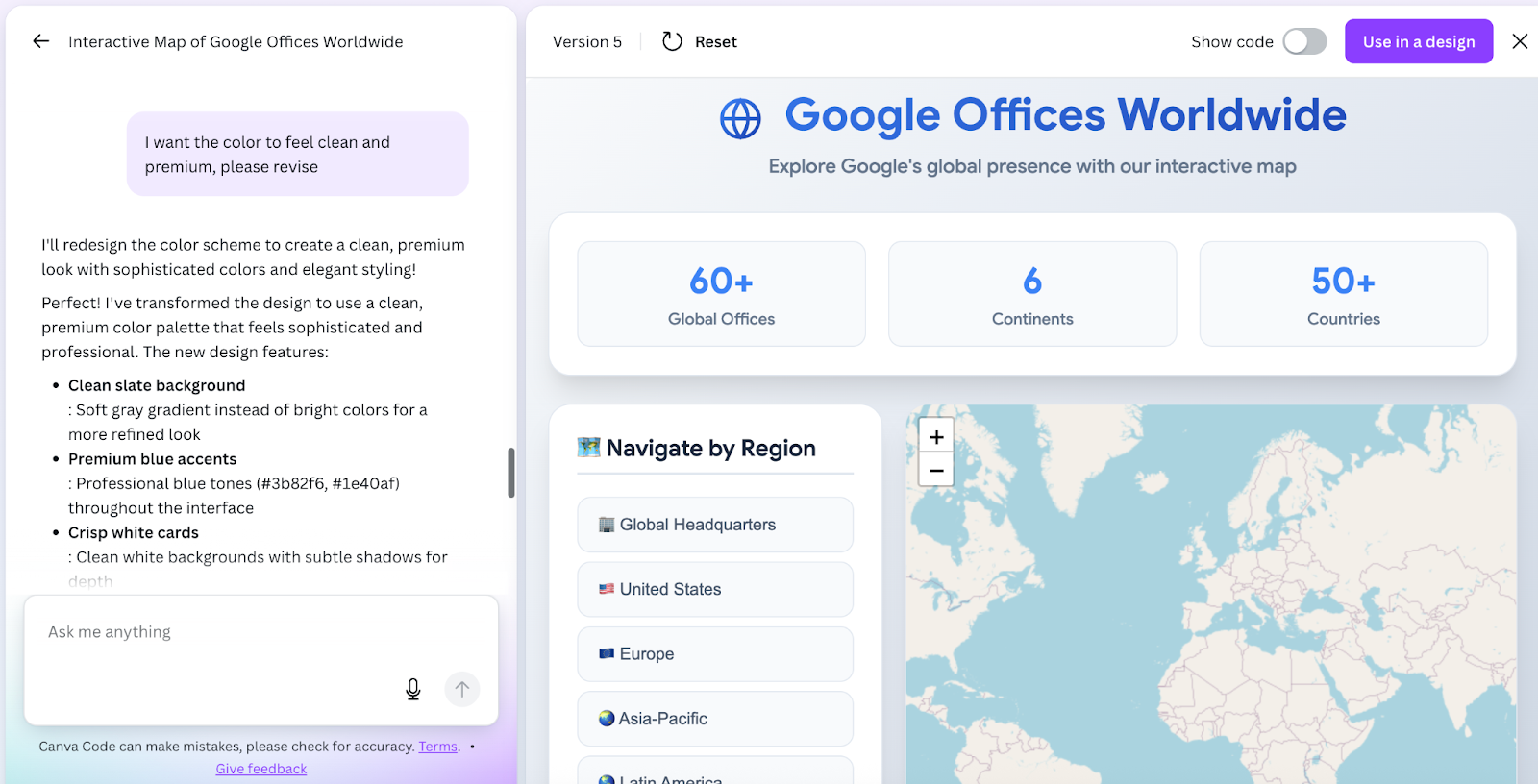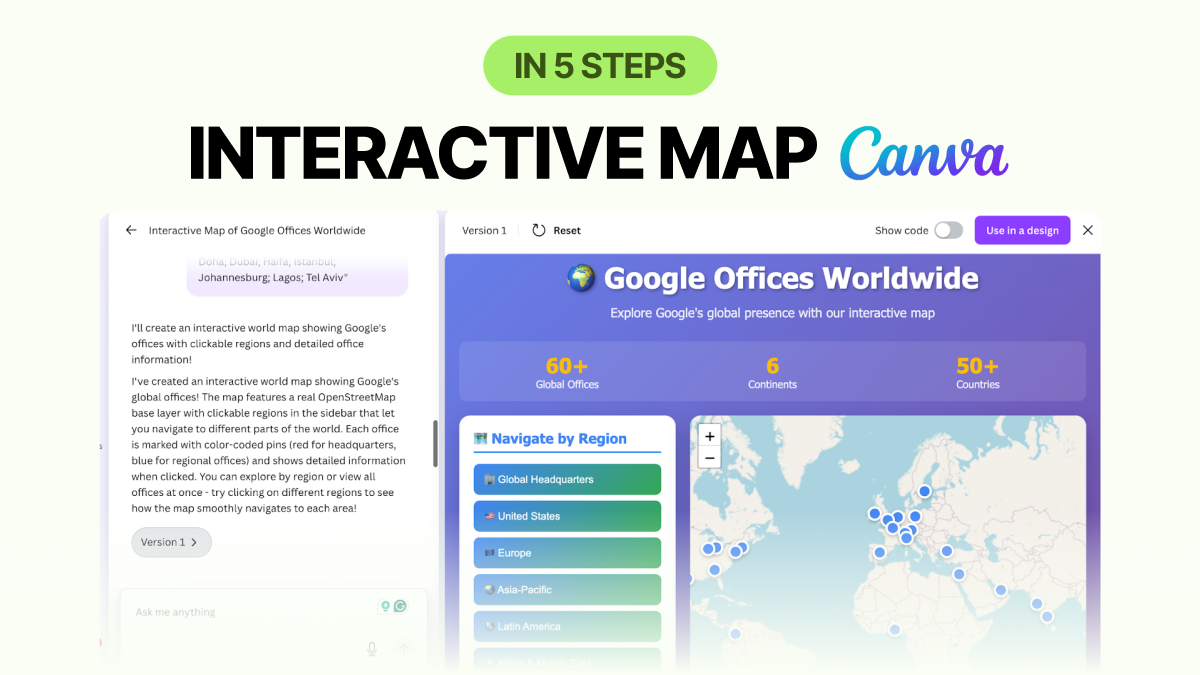We’ve all sat through slides that feel flat. What if, instead of showing static charts or bullet points, your audience could click, zoom, and explore right inside your presentation?
Canva AI’s Code for me turns that idea into reality, helping you create interactive visuals that keep people engaged, without needing to code. One of the best examples: building a live world map where your audience can explore office locations by region, like Google’s global footprint. Here’s how to do it in minutes.
As AI becomes more deeply integrated into everyday tools like Canva, the way we approach creative work is starting to shift by expanding what individuals and small teams can take on. If you’re curious about how to structure your own AI-enabled creative team or want to explore what roles make sense to automate or augment, check out our Build Your AI Teams section for practical guidance.
Step 1: Go to Canva AI’s Code for me
- In Canva, open Canva AI and choose Code for me.
- This tool generates interactive elements you can drop straight into your slides: maps, timelines, dashboards, even mini games.
Step 2: Paste a clear prompt with your office list

Give Canva both instructions and data. Example:
Prompt
“Create an interactive world map with a sidebar labeled ‘Navigate by Region’ (Global HQ, United States, Europe, Asia-Pacific, Latin America, Africa & Middle East, plus a ‘View All Offices’ button). Add pins for each office, with tooltips showing city and country. Place three stat cards above: ‘60+ Global Offices,’ ‘6 Continents,’ ‘50+ Countries.’ Use a professional, clean design.”
Include your actual office list (Googleplex, New York, Dublin, Singapore, etc.) so Canva can generate pins in the right spots.
Step 3: Test and refine with natural language feedback

Your first version won’t be perfect and that’s totally fine. Preview it, then simply tell Canva what to fix. Try prompts like:
- “Make the color scheme clean and premium - soft gray background, crisp white cards, blue highlights.”
- “Increase pin size and add city labels on hover.”
- “Add smooth zoom animations when selecting regions.”
- “Show a counter when a region is selected, e.g., ‘Europe - 12 offices.’”

Each tweak gives you a new version.
Step 4: Embed it directly into your deck
When you’re happy with the outcome, it’s time to integrate it into your work.

Click Use in a design → choose your presentation. Position and resize the map like any other element. In Present mode, your audience can now click, zoom, and explore locations without leaving the slide.
Step 5: Try other interactive ideas with Canva Code
This workflow isn’t limited to maps. You can also build:
- Interactive org charts that expand on click
- Click-to-reveal training quizzes
- Regional dashboards with filters
- Animated product launch timelines
With just a prompt, Canva helps you move from static slides to dynamic experiences that keep your audience leaning in.



